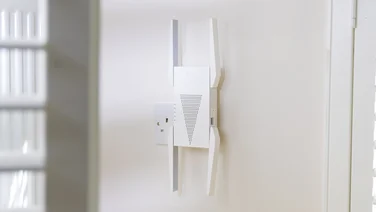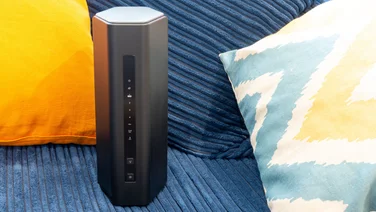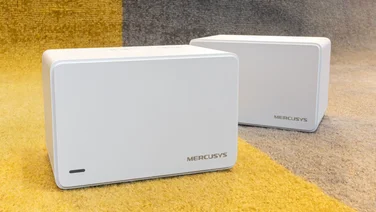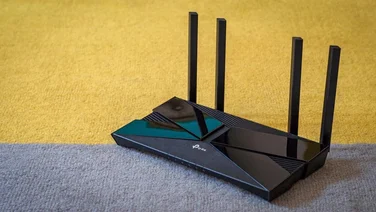To help us provide you with free impartial advice, we may earn a commission if you buy through links on our site. Learn more



If your internet connection now comes via BT’s Infinity fibre optic VDSL2 service, either from BT itself or via a reseller, then you’re probably using a BT VDSL2 modem connected to a standard Ethernet router. There aren’t any inherent problems with a setup like this, but neither is it the most efficient combination of cabling, hardware and features.
The Draytek Vigor 2750Vn has an integrated VDSL2 modem, so – in theory – all you need to do is connect the RJ-11 cable from your phone socket to the router and away you go. In practice, there are a few settings you’ll have to change from their defaults to get your new router working with BT’s infrastructure.

The router’s web-based quick start wizard guides you through the basics of configuration, including setting a more secure password, getting the wireless network up and running and setting up your internet connection. If you’re using a BT Infinity-based service, as well as setting your WAN type as PPPoE and entering the user name and password provided by your ISP, you’ll also have to go to the Multi-VLAN sub-menu of the WAN settings, tick the box marked Enable Multi-VLAN Setup and change the WAN VLAN ID to 101. There’s a handy guide on Draytek’s website if you run into any further difficulties.
When it comes to Wi-Fi, we’ve had great performances from Draytek’s routers in the past, even in a testing environment saturated with rival wireless networks. The 2750Vn has dual-band Wi-Fi. It supports both the fast 5GHz band that’s increasingly used by high-end modern laptops, phones and tablets, and the 2.4GHz band, which is more congested and slower but compatible with more devices. Unfortunately, the router doesn’t support simultaneous dual-band, so you’ll have to pick one or the other, depending on what’s supported by the majority of your devices.

If you plan on using the router to provide visitors with internet access, we strongly recommend opting for the greater compatibility of the 2.4GHz band. In our tests, wireless transfer speeds were impressive on both bands. When using a Centrino 2 laptop on the 2.4GHz band, we saw speeds of over 40Mbit/s at close proximity and a steady 35Mbit/s at a distance of 10m. Even when we moved the laptop to 25m away we got speeds of 11Mbit/s. Results with Draytek’s own Vigor N65 USB wireless dongle (£33 ex VAT) were significantly faster at close and medium distances, peaking at just over 79Mbit/s at 1m and 68.1Mbit/s at 10m. 5GHz performance was even faster, with 10m throughput rates of 60Mbit/s using our Centrino 2 laptop and a massive 126Mbit/s using the N65 dongle.
Although it can’t do simultaneous dual-band Wi-Fi, the 2750Vn lets you configure up to four wireless guest networks, each of which can be set up with its own unique password and permissions. This is ideal if you want to provide Wi-Fi internet access to staff or visitors without allowing them unrestricted access to the rest of your network.
The Vigor’s features don’t end there. Its integrated VoIP capabilities might not be up to those of a dedicated VoIP server, but it’s easy to configure up to six SIP accounts which you can route to two standard telephones connected to a pair of RJ-11 ports at the base of the router. Once again, Draytek provides detailed documentation and clear menu options to help you configure your VoIP service to work with your router and phones.
The router also supports inbound VPN connections, allowing remote staff to access your local network. There are two USB ports. You can use these to connect USB storage drives, which you can then share over your network via FTP or SMB as you would a NAS drive. The NAS can act as a network server for a USB printer and you can set up a 3G dongle or even an analogue modem connection that will come online if your main internet connection fails, making your business more able to stay online no matter what.
In addition to these more uncommon features, you’ll find the usual support for web content filtering by domain, keyword or category – the latter option is only available if you subscribe to Draytek’s filtering service – as well as tools to help you block specific protocols and applications including streaming media services, Peer-to-Peer file sharing, instant messaging and more.

As well as two USB ports and a pair of connections for phones, the Vigor has four Gigabit Ethernet ports, allowing for the best possible speeds across your network. When it comes to its performance in WAN speed tests, the router’s built-in VDSL2 modem didn’t provide a significant improvement over the modem from our ISP. Using the modem and a standard Ethernet router, our VDSL2 connection from Zen Internet gave us a download speed of 74Mbit/s and an upload speed of 17Mbit/s. With the Vigor, we got 76Mbit/s down and 14Mbit/s up. These figures were measured within an hour of each other – there’s a required time delay before you can switch from one modem to another on BT’s network – and are all within the usual range of speeds we see from our connection.
The 2750Vn provides a comprehensive range of tools for the small business user, wrapping everything up in a single device with excellent documentation and an easy-to-use – if not always particularly attractive – interface. It’s a little more expensive than comparable ADSL or Ethernet routers designed for SMB users, which is mostly down to the cost of the VDSL modem. If you’re going to get good use out of several of the features here – such as the basic VoIP support, VPN and 3G modem backup – then the 2750Vn’s convenience easily justifies its £150 cost, particularly in light of its top-notch wireless performance. However, if you just need a fast but basic internet connection or even if you want to upgrade your Wi-Fi, we recommend sticking with the modem provided by your ISP and connecting an Ethernet router such as the Belkin N600 DB Wireless Dual-Band N+ Router.





